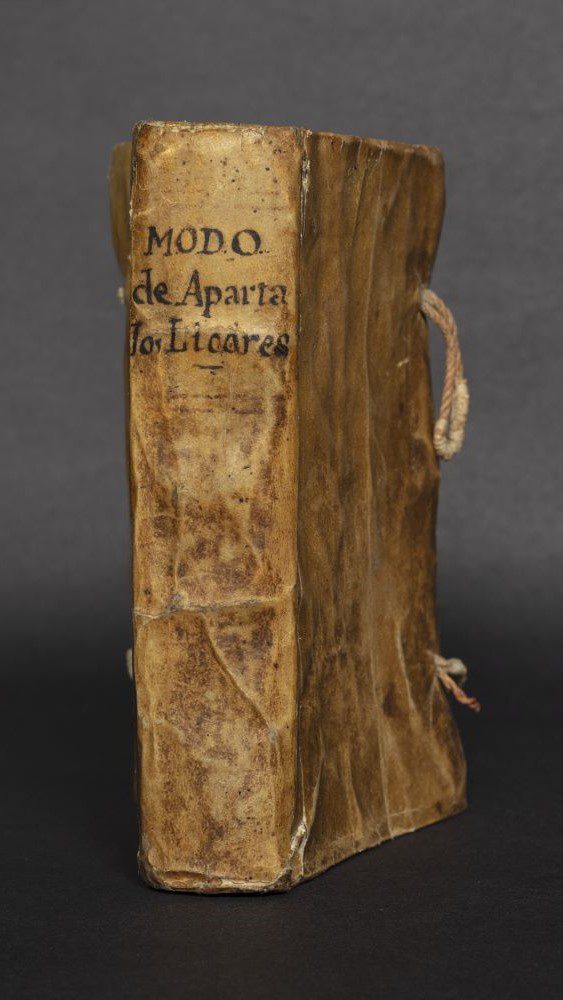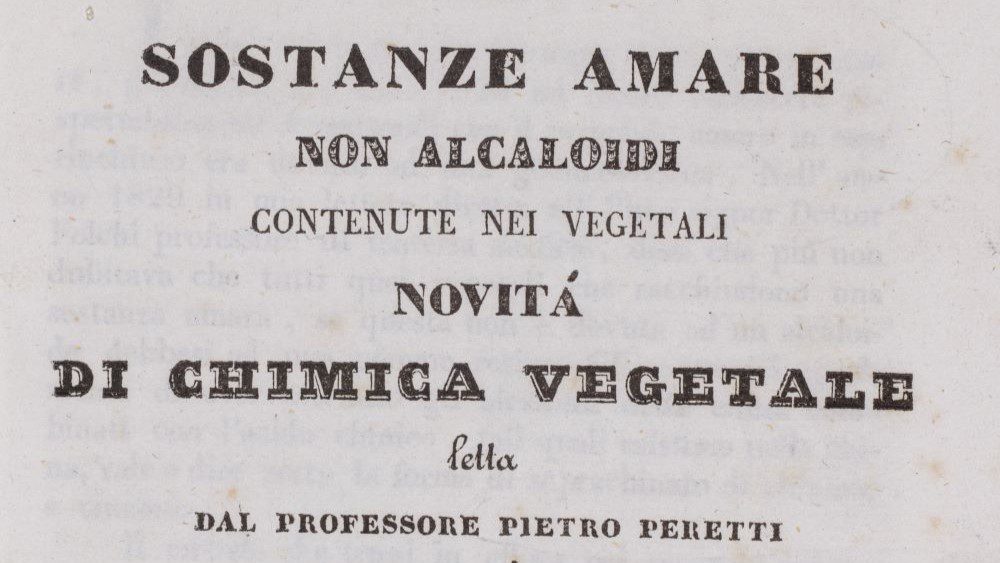Distilling History: Rare Books Gifted to UC Davis Library
Texts on distillation and bitter compounds inspire partnerships across campus

Whether in the pursuit of water, gold, or other scarce elements, the extraction of essential, even mythical, properties from natural sources has a long and varied history. Two rare books recently donated to the library’s Food and Wine collections offer new opportunities to use historic works on distillation and extraction for teaching and research.
Arte separatoria y modo de apartar todos los licores, que se sacan por via de destilacion: para que las medicinas obren con mayor virtud, y presteza, published in 1598, is a rare early volume on the art of distilling liqueurs for medicinal, therapeutic, and enjoyment purposes. Its author, Diego de Santiago, was the formative chemist during the Spanish Renaissance and a leader in encouraging the Spanish court to value scientific discovery.
Delle sostanze amare non alcaloidi contenute nei vegetali novitá di chimica vegetale (1841) was written by Pietro Peretti, an Italian contemporary of well-known French pharmacists Joseph Bienaimé Caventou and Pierre-Joseph Pelletier. Peretti was a professor of pharmacy at the Archiginnasio in Rome and published important works on pharmaceutical recipes as well as chemical extraction from plants. This rare nineteenth-century book offers a detailed study of bitter compounds found in food. Sections include coffee, the cinchona tree (which produces quinine, an extract used in bitters), and bitter ash (a plant that is used in Angostura Bitters).
The books are gifted by longtime friend and supporter of the library, Darrell Corti. Arte separatoria is given in honor of Professors Roger Boulton and Ron Runnebaum for their contributions to the distilling program at UC Davis. Delle sostanze amare non alcaloidi is gifted on behalf of UC Davis researchers who work on properties of bitterness including those affiliated with the Global Tea Initiative for the Study of Tea Culture and Science, the UC Davis Coffee Center, and the Viticulture & Enology department.

New Applications for Historic Works
In the early modern period, alchemy was valued as part of an expansive definition of science, and it played a central role in efforts to develop medicinal treatments through distillation. King Philip II of Spain was fascinated by both science and magic, and he also suffered from numerous health ailments. In 1573, he issued a royal decree to create a new pharmacy at the monastery of San Lorenzo in El Escorial, a town center buzzing with invention and scientific activity. A laboratory, which consisted of four distilleries, was built near the monastic pharmacy. Diego de Santiago designed two of these distilleries, and King Philip II appointed Santiago as the royal distiller (destilador de Su Majestad) around 1587. Santiago’s role at the El Escorial laboratory included creating medicinal waters for the royal family.
While at the royal laboratory, Santiago wrote Arte separatoria, which is considered one of the most significant treatises on distillation. The book, written in Old (Castilian) Spanish, is widely believed to be the only sixteenth-century treatise solely dedicated to the art of distilling that was published in Spain. Adding to the book’s rarity is that few written records remain that document the vast work generated by doctors, alchemists, and natural philosophers during the Spanish Renaissance. During the reign of King Philip II, efforts to protect the secrecy of state alchemical work limited the publication of new discoveries generated from the royal laboratory at El Escorial.
Research and Teaching in the Archives
Arte separatoria, as a historical precedent, complements current areas of growing research at UC Davis including sustainable distilled spirits. Dr. Ron Runnebuam, who has a joint appointment in the Departments of Viticulture & Enology and Chemical Engineering & Materials Science, is investigating the potential of agave – a drought-tolerant plant used to produce tequila and mezcal as well as other products – as a sustainable crop in California. According to Dr. Runnebuam, Arte separatoria is interesting not just from a scientific perspective but for teaching students about a wide range of applications for distillation. Once it is translated into English, Dr. Runnebaum looks forward to using the book to introduce students to the relevance of revisiting past practices for contemporary research.
The acquisition of Arte separatoria also creates opportunities for cross-campus collaboration between the Viticulture & Enology and Spanish & Portuguese departments. The book’s value is not only its age and scarcity but also its far-reaching application to student learning and faculty research. Arte separatoria illustrates the evolution of written Spanish in the sixteenth century and, as a scientific text, addresses the historical lineage and medicinal value of different distilled beverages. The text offers a firsthand opportunity for faculty in the Department of Spanish & Portuguese to teach translation to students, first from Old Spanish to Modern Spanish and then into English. The translations, both in Modern Spanish as well as English, will make the book more accessible to researchers at UC Davis and beyond.